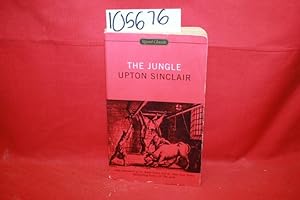“I wrote with tears and anguish, pouring into the pages all the pain that life had meant to me.”—Upton Sinclair
Ranking alongside Harriet Beecher Stowe’s Uncle Tom’s Cabin as a novel that has galvanized public opinion, The Jungle tells the story of Jurgis Rudkus, a young immigrant who came to the New World to find a better life. Instead, he is confronted with the horrors of the slaughterhouses, barbarous working conditions, crushing poverty, disease, and despair.
Upton Sinclair vividly depicted factory life in Chicago in the first years of the twentieth century, and the harrowing scenes he related aroused the indignation of the public and forced a government investigation that led to the passage of pure food laws. A hundred years later, The Jungle continues to pack the same emotional power it did when it was first published.
Upton Sinclair (1878-1968) was born in Baltimore. At age fifteen, he began writing a series of dime novels in order to pay for his education at the City College of New York. He was later accepted to do graduate work at Columbia, and while there he published a number of novels, including The Journal of Arthur Stirling (1903) and Manassas (1904). Sinclair’s breakthrough came in 1906 with the publication of The Jungle, a scathing indictment of the Chicago meat-packing industry. His later works include World’s End (1940), Dragon’s Teeth (1942), which won him a Pulitzer Prize, O Shepherd, Speak! (1949) and Another Pamela (1950).
